
Dan Thawley posing with La Romaine Editions. Photography by Lars Brønseth for PIN–UP.

Dan Thawley, Art Director of MATTER and SHAPE, posing in the design salon's public meeting space designed by Willo Perron. Photography by Lars Brønseth for PIN–UP.
“Paris is at the heart of a lot of artistic and intellectual thought; it has been for centuries. The history of museums, of making and showing artisanal crafts, is so potent here. To do something in the middle of the city, in the Jardin des Tuileries, was to say that we embrace the feeling of the salon.” For writer and editor Dan Thawley, who is the Artistic Director of MATTER and SHAPE, describing the event as a salon in the tradition of European intellectual and artistic gatherings held since the 16th century rather than a fair or an exhibition was an important detail. “It is an idea that is somewhat lost today, but it remains essential to have a place for the exchange of creative thought about design, art, beauty, literature, philosophy, and all of these other things,” Thawley tells me. “I am not saying that we achieve all of those things with MATTER and SHAPE just yet, but the idea is that this is not just a commercial venture. It is also a place for encounters, discussion, meeting new people, and exchanging ideas.”
Thawley told me this while seated on one of the two sofas in a sort-of staged living room set up by Teget designer Ana Kraš, who is showing pieces from her new homeware brand, which includes a collection of fabric sofa slips, paper wall lights, a coffee table, and glass pieces. “I was thinking about things that I need but are hard to find,” Kraš says. “Pieces that can change the mood and twist around the look of a space.”

Dan Thawley posing with La Romaine Editions. Photography by Lars Brønseth for PIN–UP.
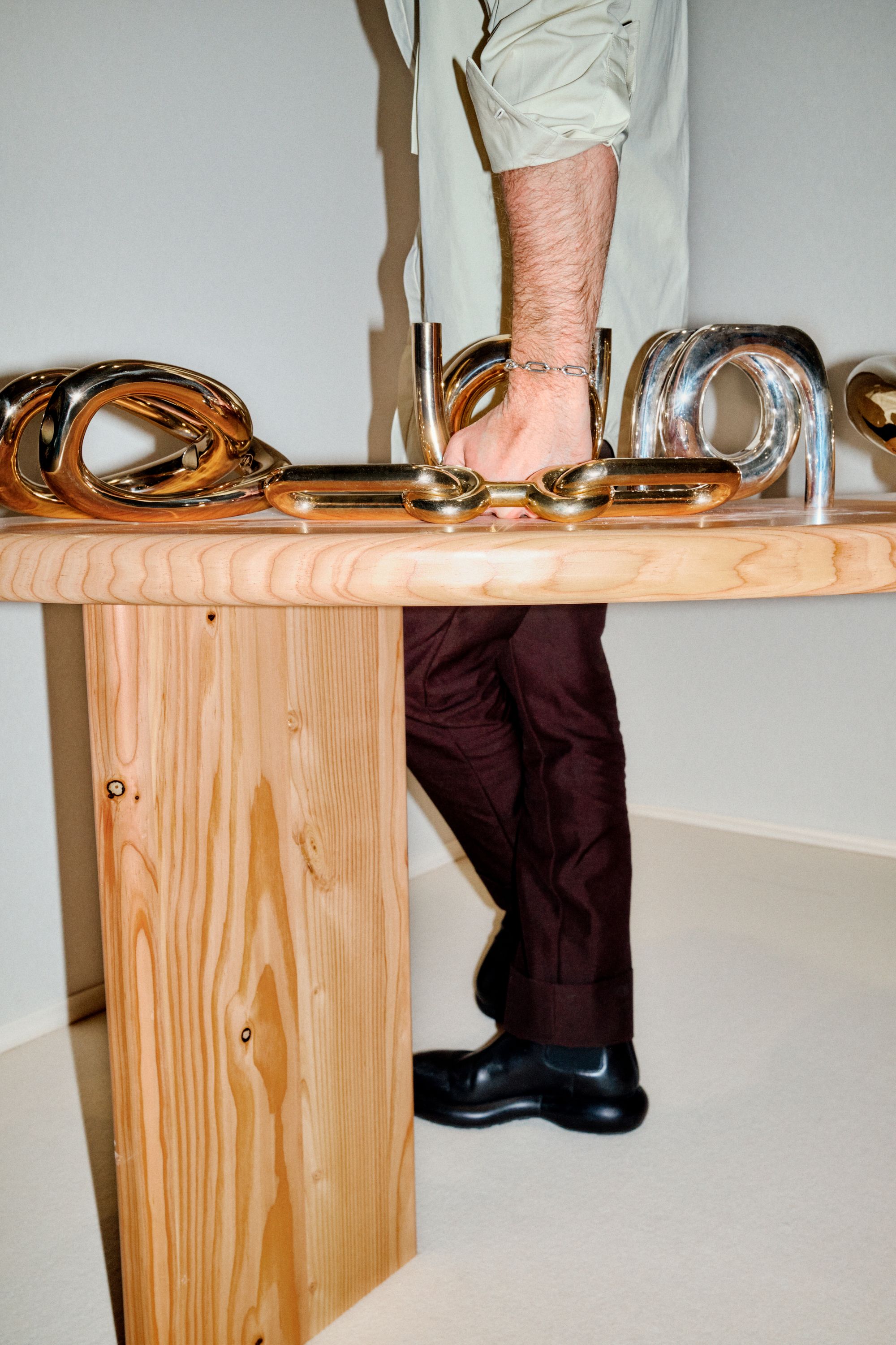
Dan Thawley posing with Charlotte Chesnais. Photography by Lars Brønseth for PIN–UP.
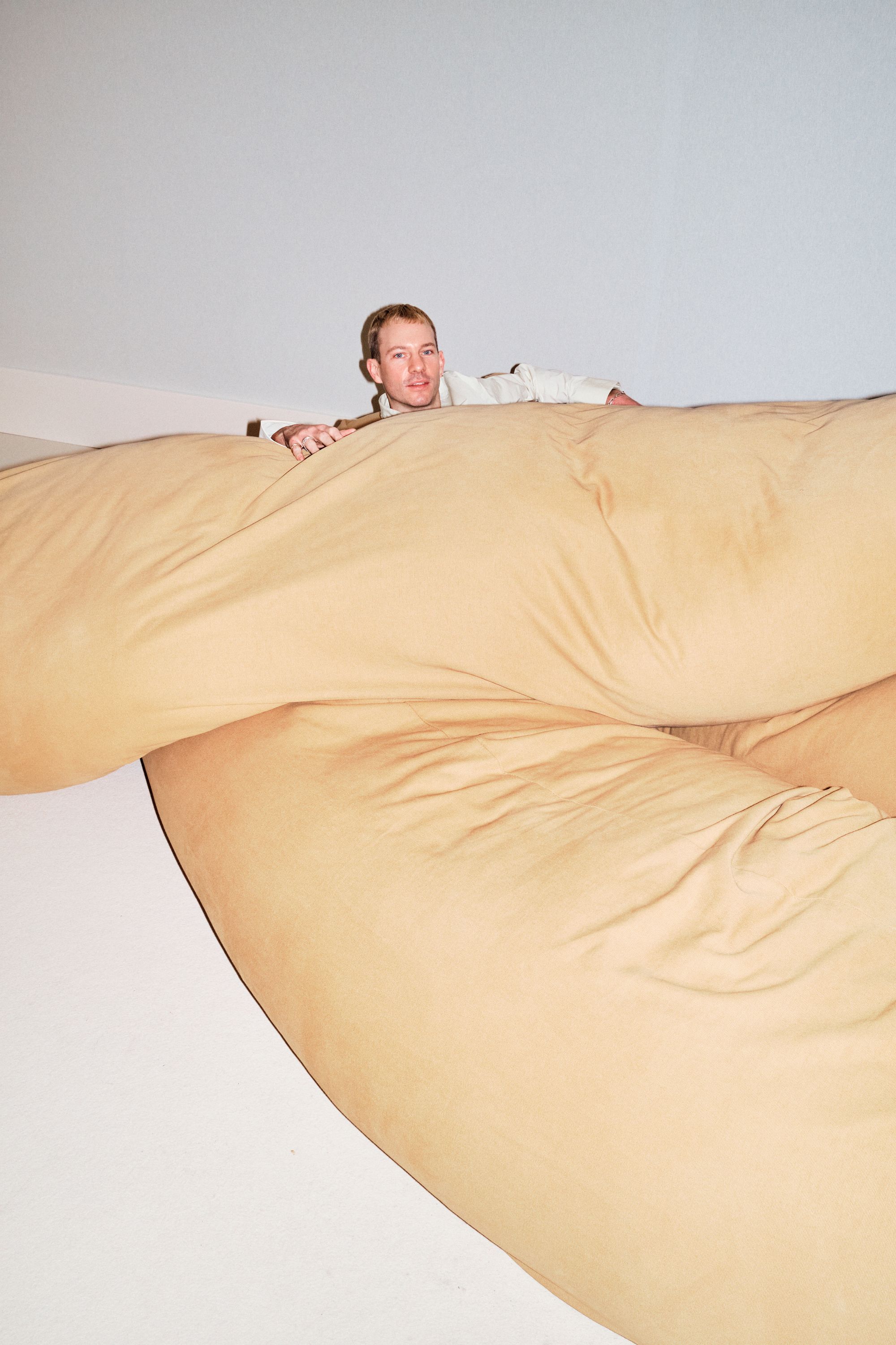
Dan Thawley posing with the Sausage Sofa by Willo Perron, who also designed the exhibition design for the fair. Photography by Lars Brønseth for PIN–UP.
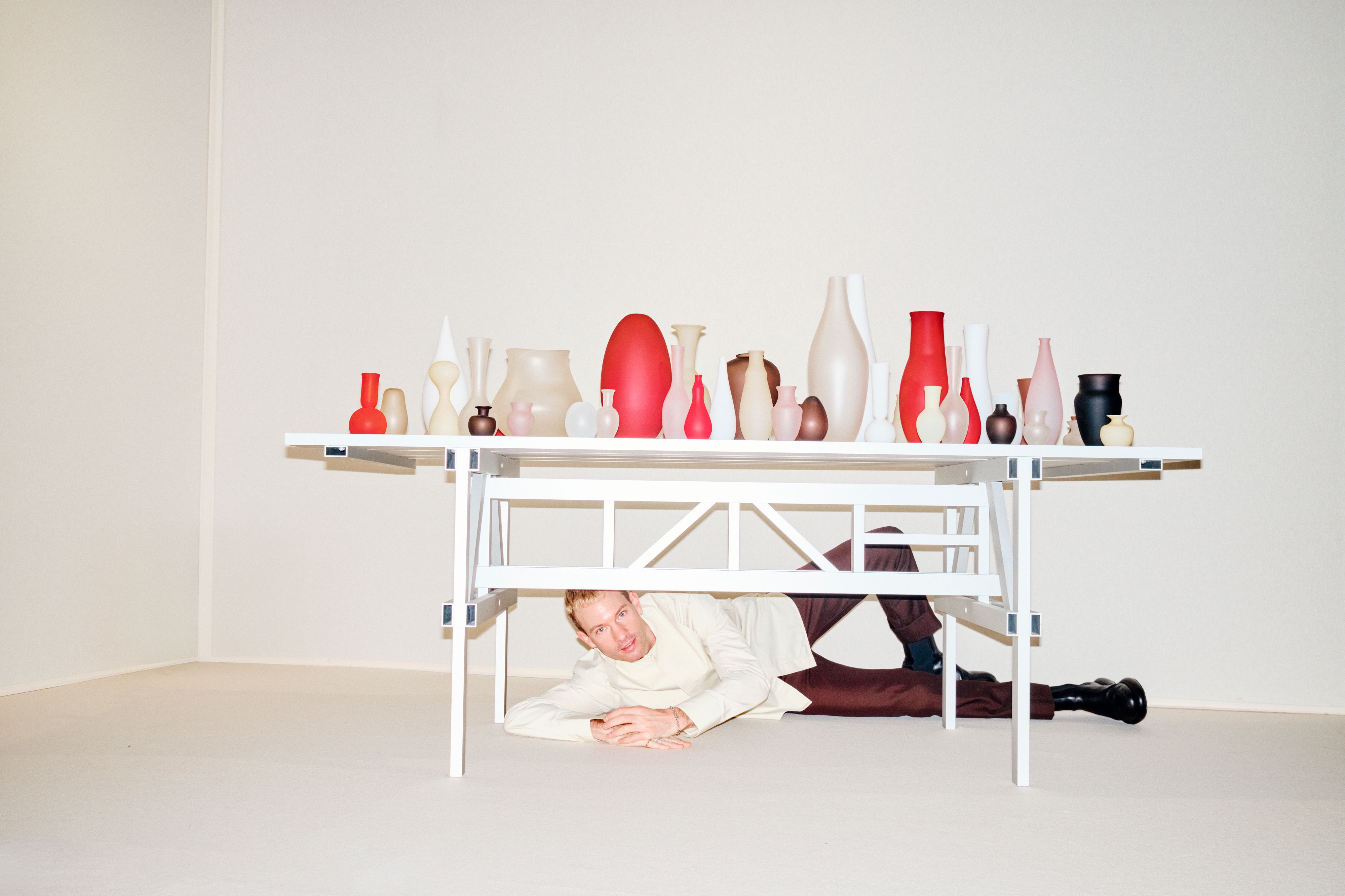
Dan Thawley posing in the booth of Canadian glass workshop Verre d'Onge. Photography by Lars Brønseth for PIN–UP.
There were a broad spectrum of design approaches, scales of, and methods of production at MATTER and SHAPE, with established brands like Alessi, Lobmeyr, Bocci, GRAU, and Flos (with Philippe Malouin) showing alongside independent practitioners, galleries, and projects like Akari Endo, Typ, Artment.dep, Natalia Criado, and Ton Magazine (PIN–UP HOME also presented its fourth collection, a collaboration with de Sede.) Sitting between the contexts of a blue-chip trade fair and an exhibition of rare historical collections, MATTER and SHAPE takes the position of design overlapping with all layers of life. “Enthusiasts can come and buy a copy of PIN–UP, a stool or a blanket, or their first piece of design to add to their home,” Thawley says. “That is so important to me, because we are all collectors.”
The space, designed by Willo Perron, includes a restaurant by WE ARE ONA and a shop with selections by Apartamento and Rare Books Paris. MATTER and SHAPE worked with exhibitors, co-creative directing some of the spaces, “connecting a 100-year old brand with a young designer, or introducing creatives to photographers and set designers who could bring a new look to their work,” Thawley says. “The goal of this edition was to recognize the different communities who are contributing to contemporary artistry — brilliant English makers, craft from Korea, Colombian silverware — and to migrate a sense of localism to MATTER and SHAPE.” At Artment.dep, Minjae Kim designed “an exploded tablescape on wheels,” a series of collaborative lamps, tables, vases, and candles that move around the room with you, inspired by traditional Korean objects like oil lamps, silk bedding, and mother of pearl.

Dan Thawley posing with Bitossi. Photography by Lars Brønseth for PIN–UP.

Dan Thawley posing with a piece by OLDER Studio. Photography by Lars Brønseth for PIN–UP.
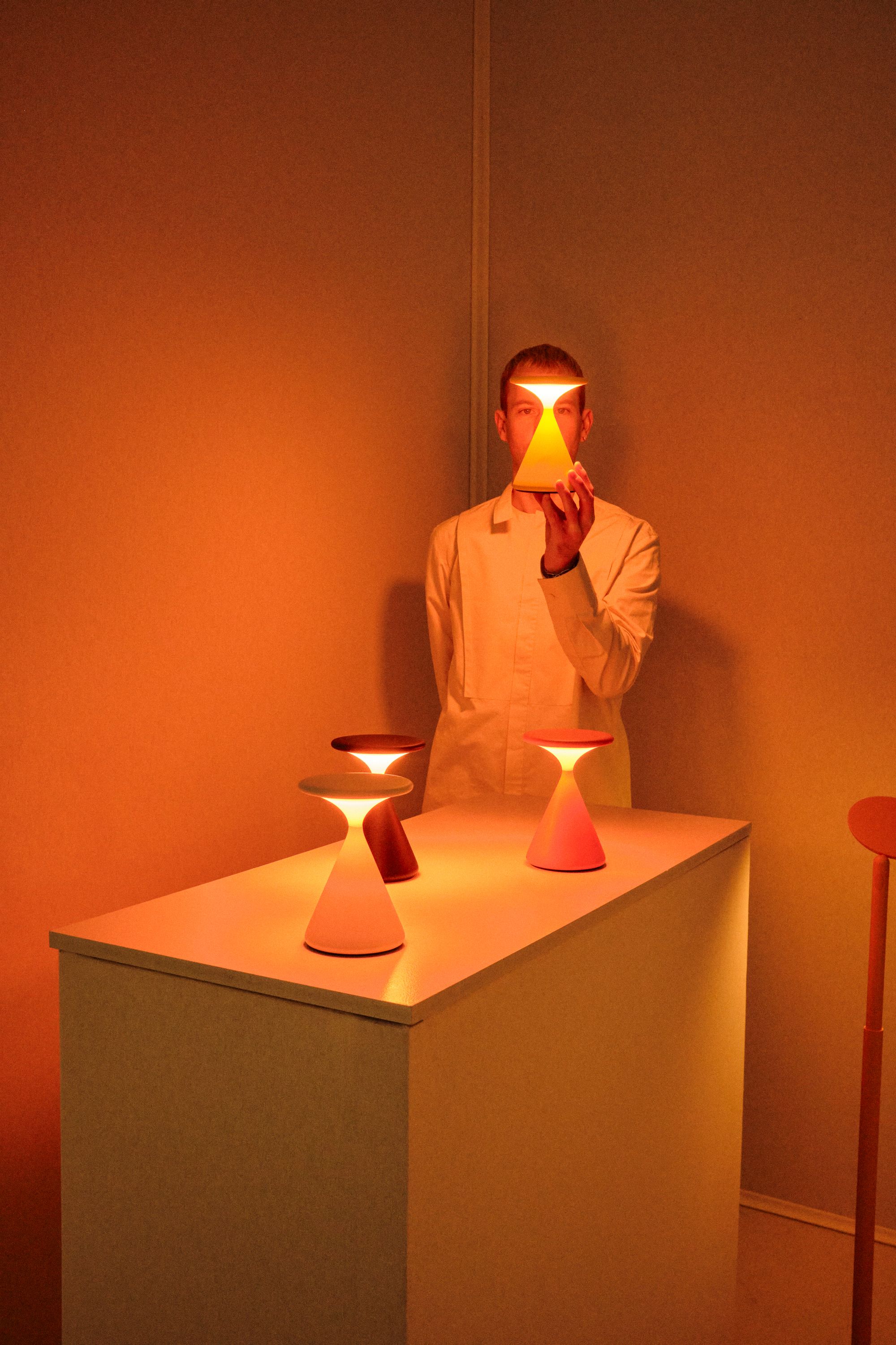
Dan Thawley posing in the GRAU booth. Photography by Lars Brønseth for PIN–UP.

Dan Thawley in the TON magazine booth. Photography by Lars Brønseth for PIN–UP.
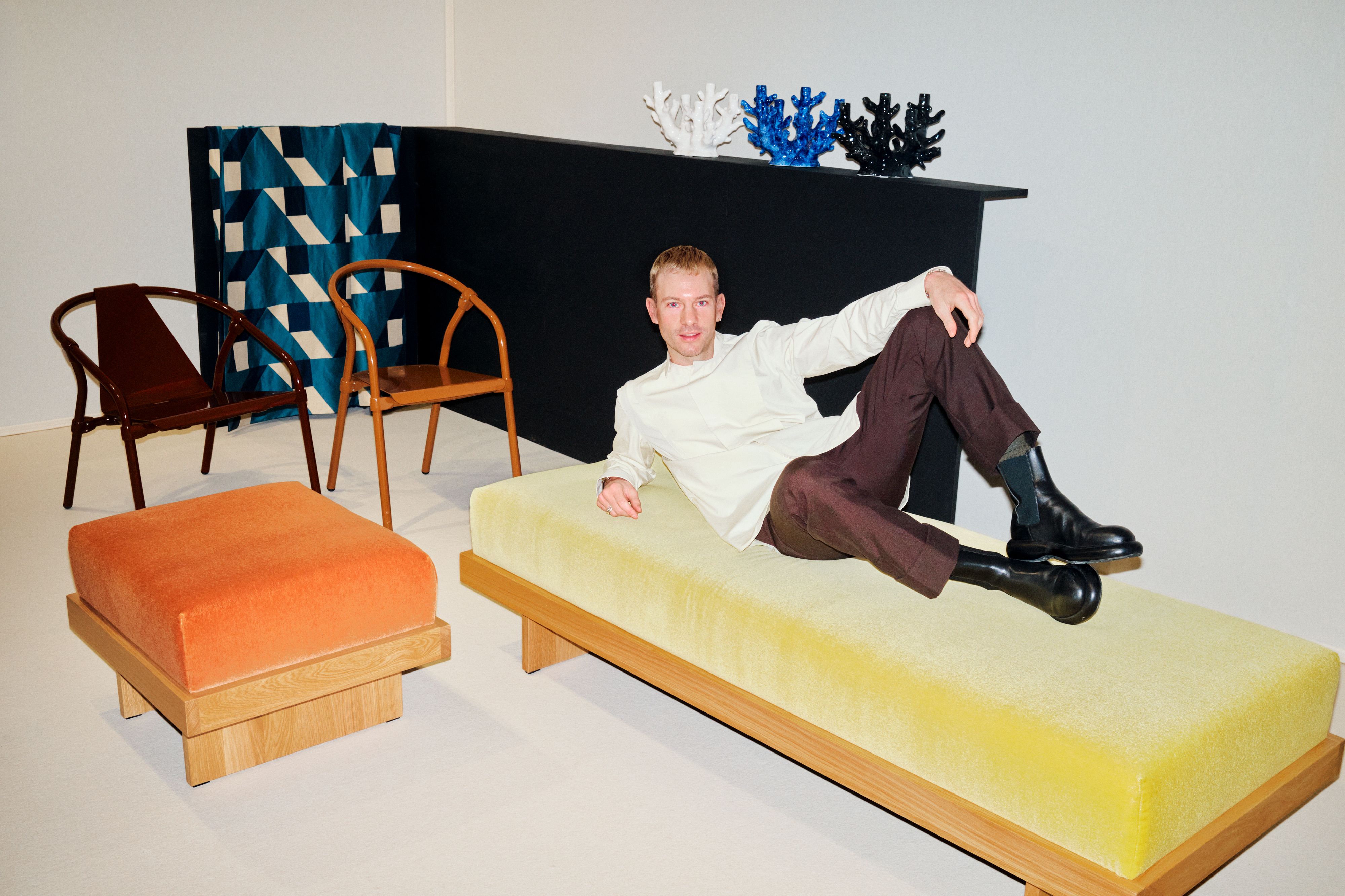
MATTER and SHAPE’s Artistic Director Dan Thawley posing in the booth of design company TYP. Photography by Lars Brønseth for PIN–UP.
At TYP, a publisher of furniture, objects, and editions working with archive pieces and new commissions, they showed two chairs in caramel and milk chocolate hues by designer Klemens Schillinger. Based on the typology of a bistro chair — one relatively faithful, one blown out into a lounge chair — the Tube chairs are made with CNC bent aluminum tubes. Each tube is linked by a connector commonly used in public transport — the handlebars on the Metro de Paris or London’s elegantly named ‘tube.’ “They only allow an octagonal, 90-degree connection, but you can design something dynamic within this constraint,” Schillinger says. “Something that orients itself on this classic typology that you see at kebab shops, but becomes something new because of the connector.”
At London-based magazine TON’s stand, the effort was collaborative, with TON founder and Editor-in-Chief Jermaine Gallacher and Senior Stylist Madeline Thornalley “pinning things up on the board together, with our roster of lovelies.” Gallacher describes the stand as “the magazine jumped off the pages” — a colorful, layered mix of contributions from makers working in a variety of materials, with steel bows by Barnaby Lewis, wobbling, mouth-blown glass by Miranda Keyes, painted, hairy waxed cotton ears by Thornally, rubber vases by LS Gomma, and a carved, burnt wood throne by Ralph Parks and Barnaby Lewis.
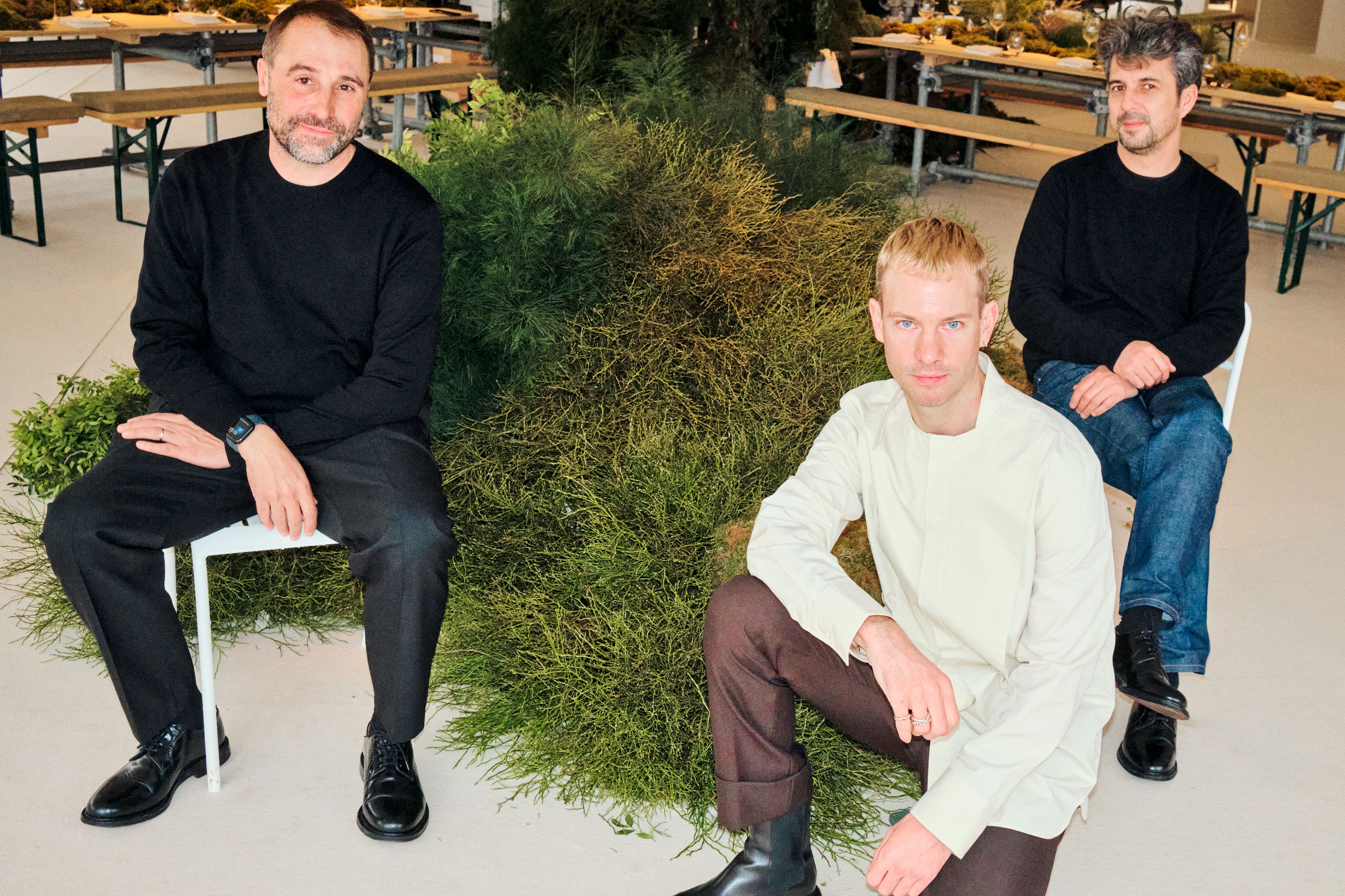
From left to right: Fréderic Maus, director of WSN, the group behind MATTER and SHAPE, Dan Thawley, MATTER and SHAPE’s art director, and Matthieu Pinet, director and founder. Photography by Lars Brønseth for PIN–UP.
“There has been a resurgence in interest in the applied arts, and a dedication to craft from young people,” Thawley says. “Design is 360. It is how we live, what we put on our bodies, what we surround ourselves with; what we eat, the fragrance we wear. We are designing our lives every day.” This way of thinking informed how Thawley and MATTER and SHAPE Director Matthieu Pinet envisioned the salon, with everything from the tent to the stands, speakers, seating, shop, and restaurant functioning as part of a ‘total’ project.
MATTER and SHAPE stemmed from a website Pinet launched nine years ago as a side project, “a playground,” where he built a community of followers interested in his curation of objects, lighting, and furniture pieces that inspired him. His boss at WSN, the events group behind MATTER and SHAPE, heard about the side project and asked if he wanted to transform it into a physical event. Pinet said no — “Don’t touch my baby” — but agreed a few months later on the condition of having carte blanche on the project. “The creative industries are becoming more and more connected,” Pinet says, “And it is just the beginning. Design intersects with food and fashion — it was the right moment to bring people together.”
On the second day of the salon, MATTER and SHAPE had hosted three times the number of visitors they were expecting, and Pinet and Thawley were already planning for future editions and other ways of engaging with people outside of the salon tent. “The idea that it can transform; that it can decontextualize in another city; that it can be smaller; that it can be supporting young designers doing all sorts of different things, is super important,” Thawley says. “It isn’t just an annual encounter.”

Dan Thawley at the RDAI booth. Photography by Lars Brønseth for PIN–UP.
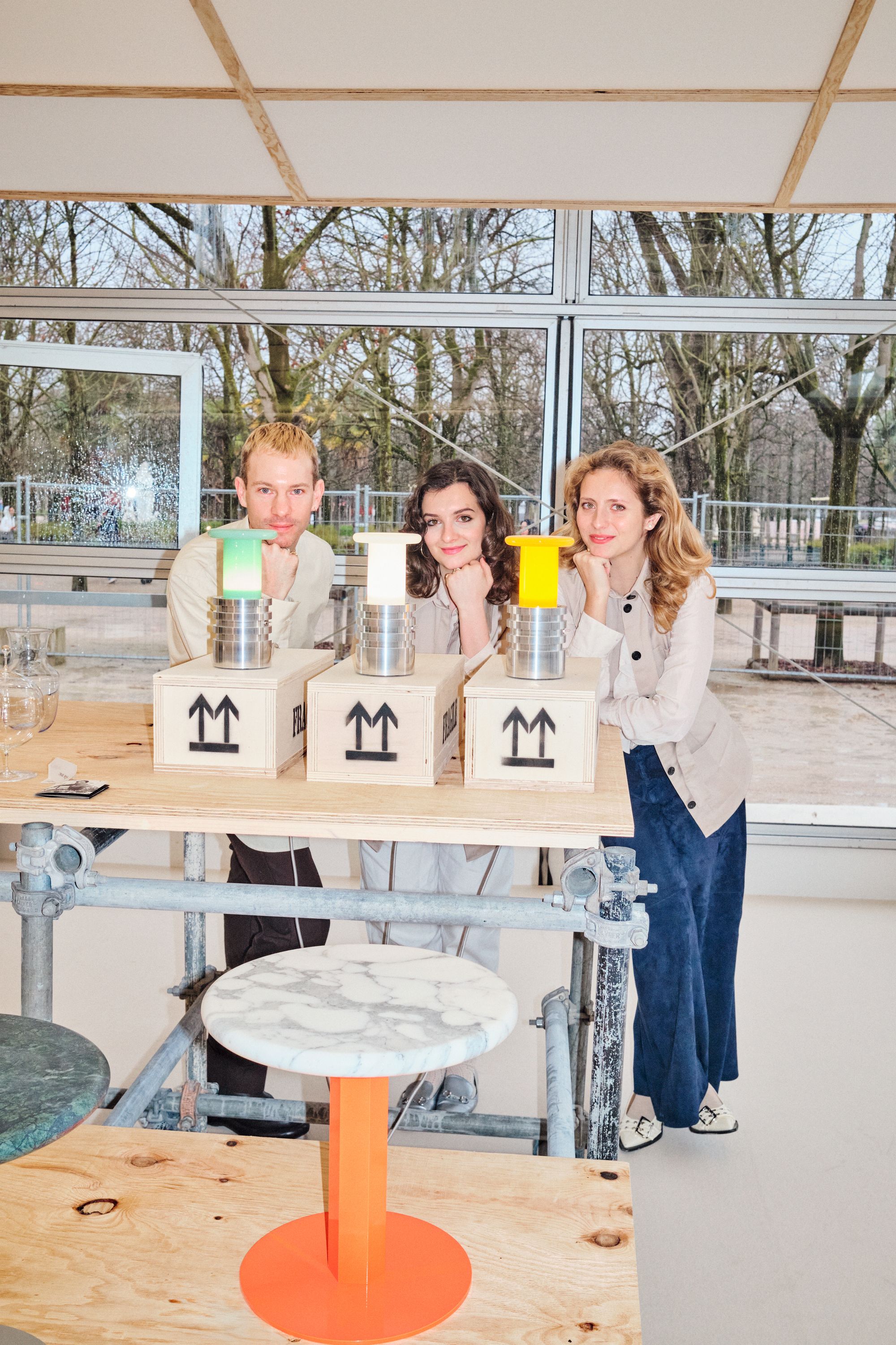
Dan Thawley with Georgia Forconi (center) and Phoebe Evans (right), behind Benoit Lalloz lamps and the marbledworks Hex Table System. Photography by Lars Brønseth for PIN–UP.
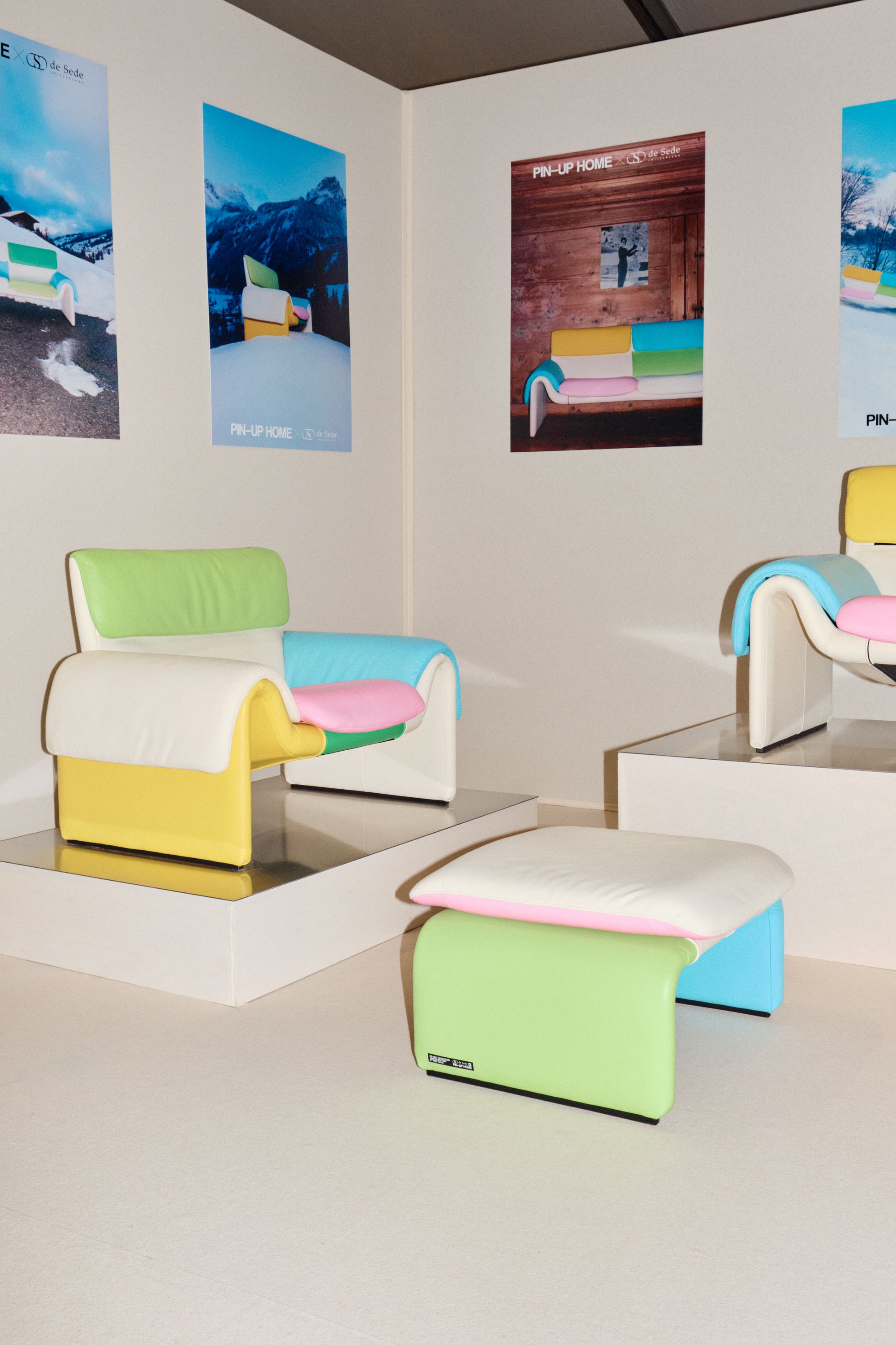
PIN–UP HOME x de Sede booth at MATTER and SHAPE. Photography by Lars Brønseth for PIN–UP.
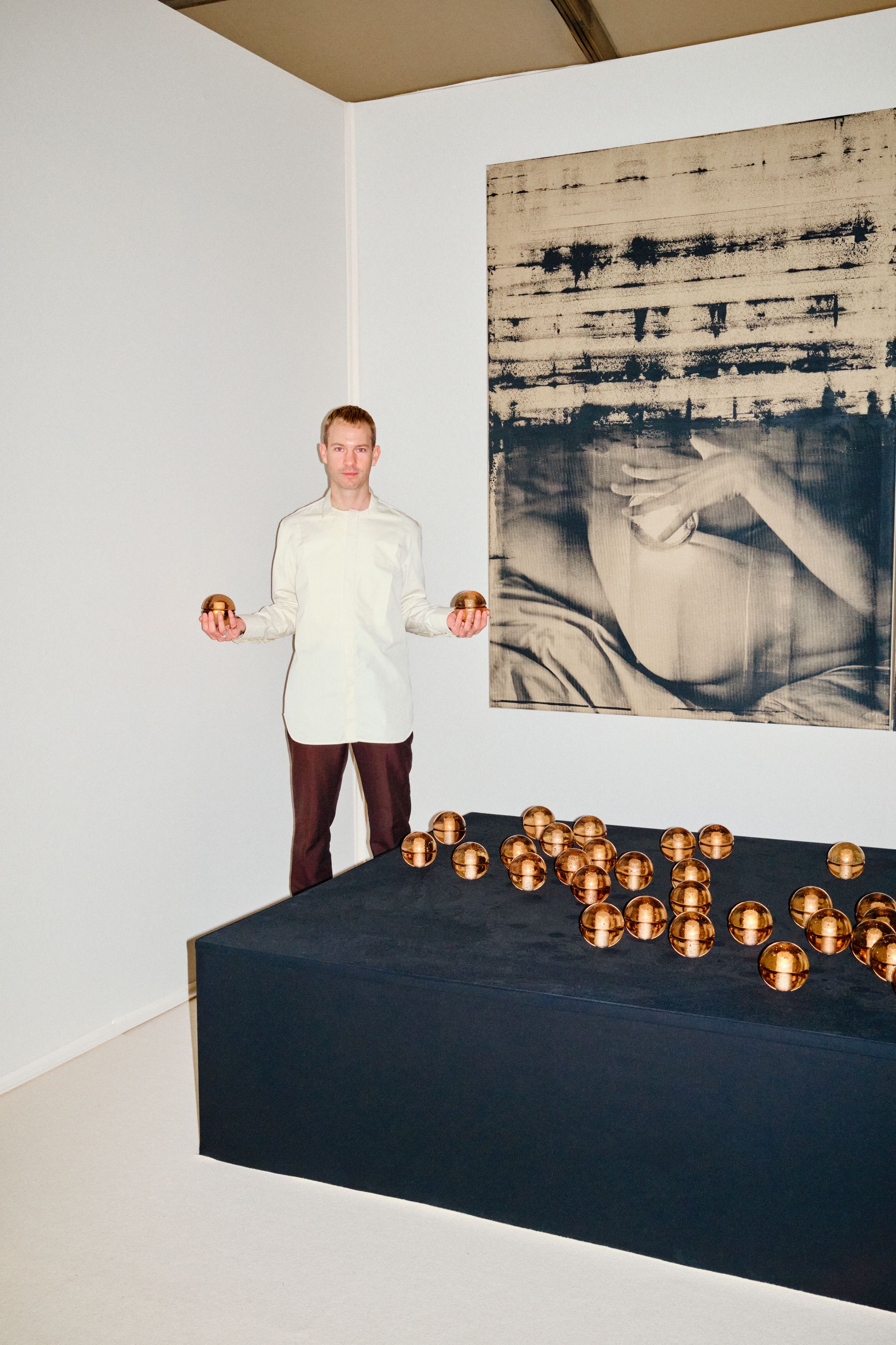
Dan Thawley at the Bocci booth with artworks by Kingsley Ifill. Photography by Lars Brønseth for PIN–UP.
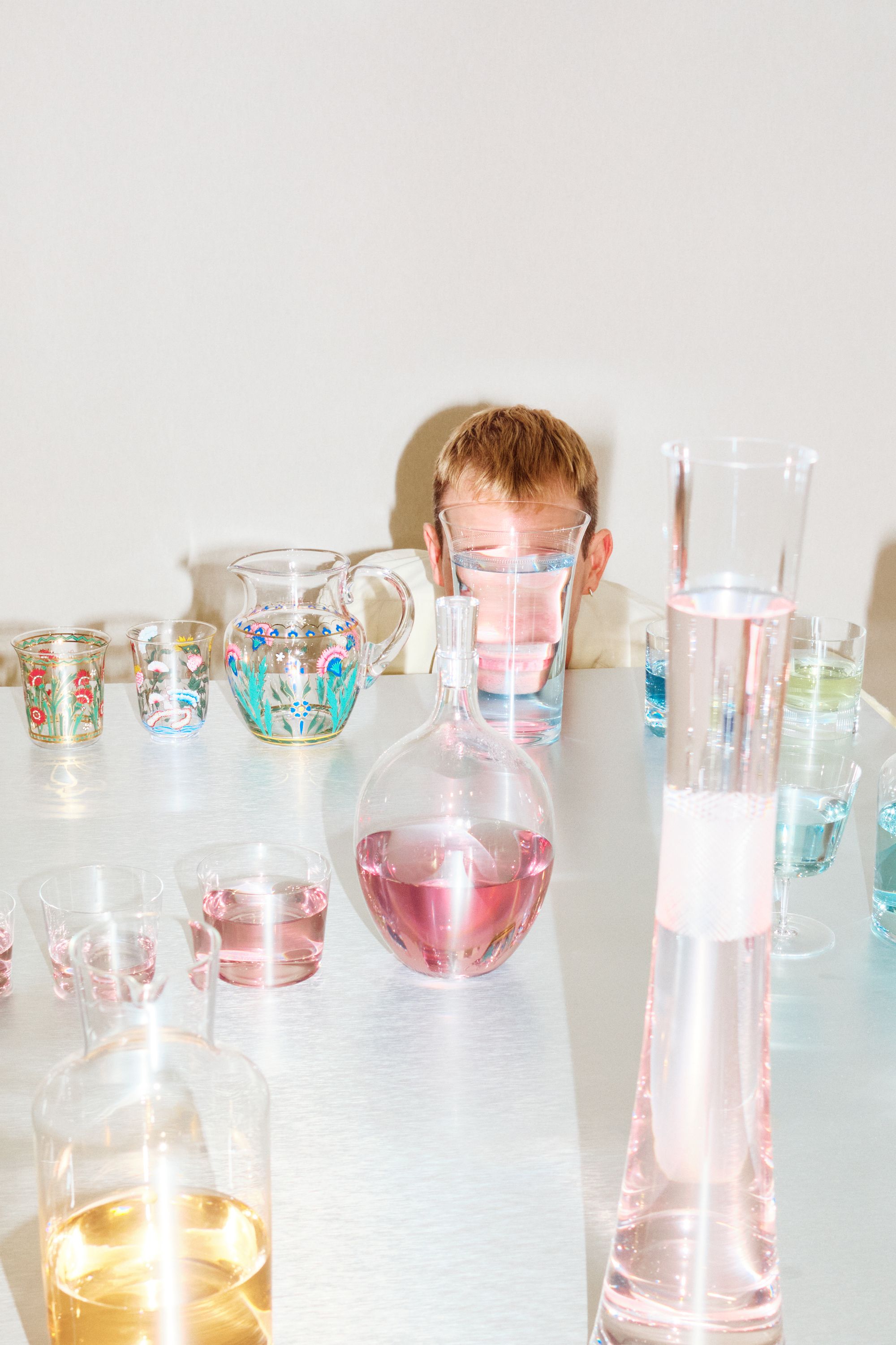
Dan Thawley at the Lobmeyr booth curated by Formafantasma. Photography by Lars Brønseth for PIN–UP.